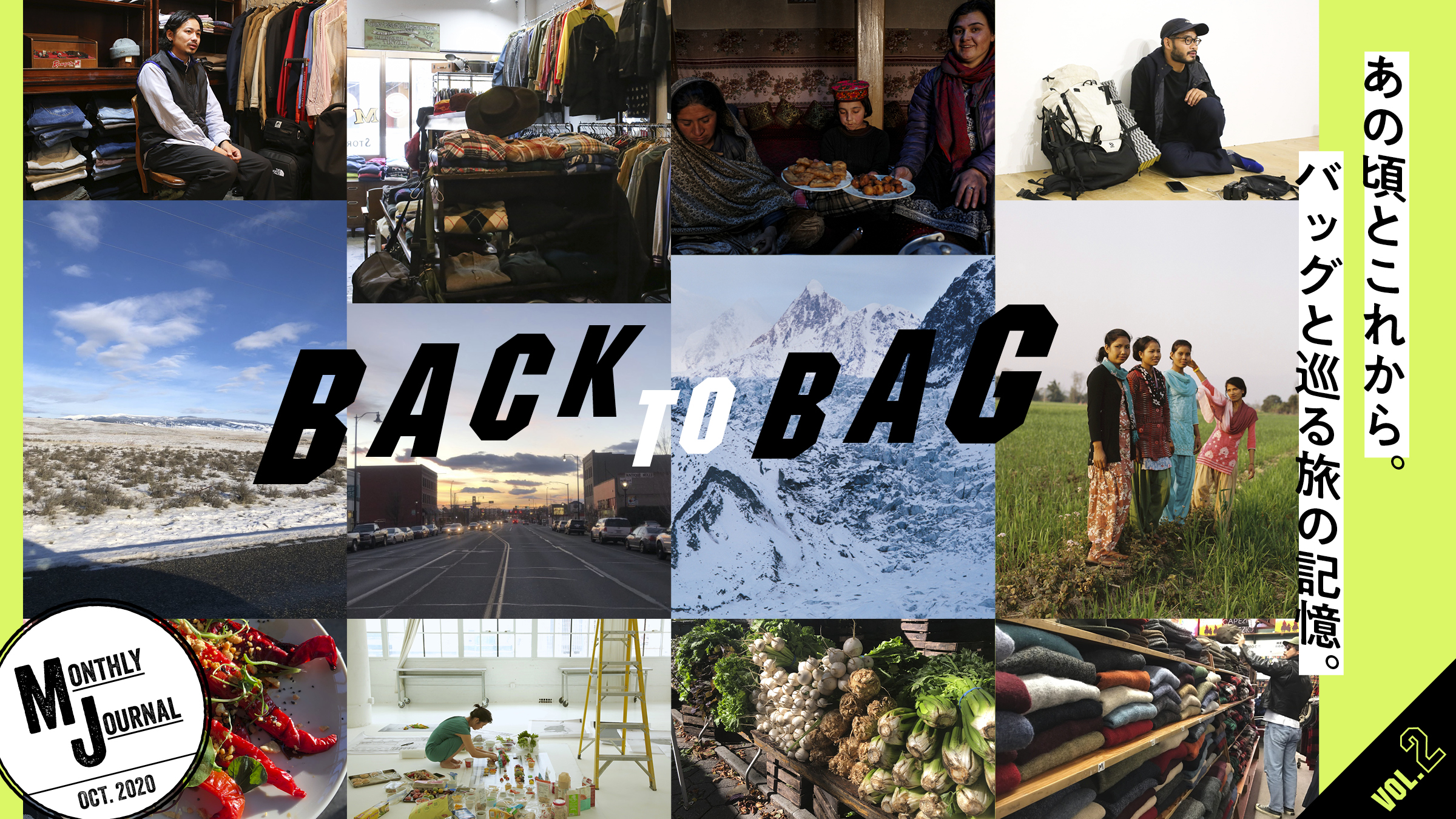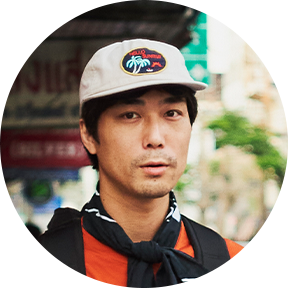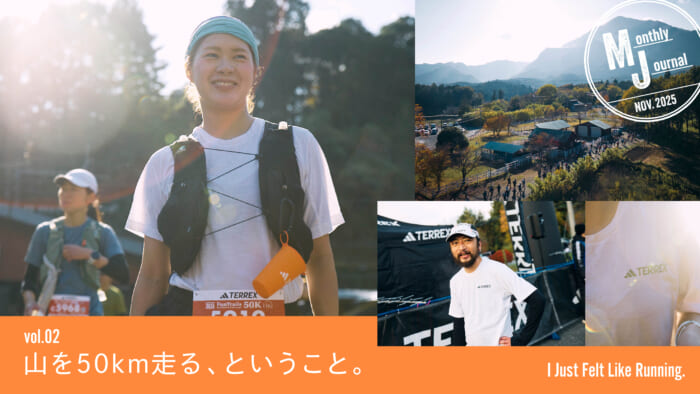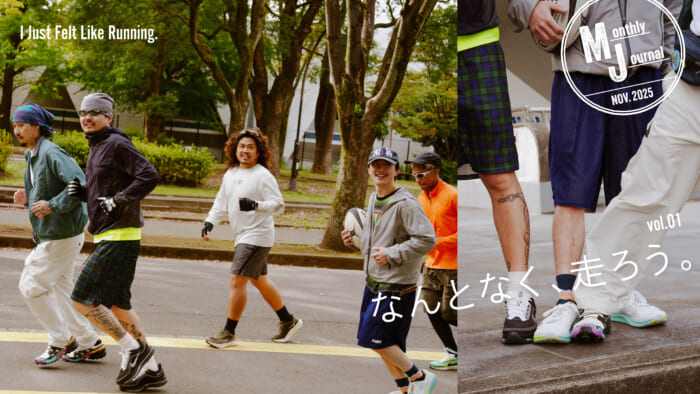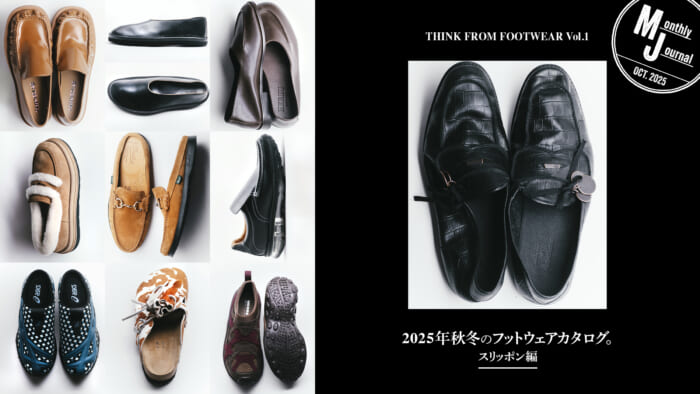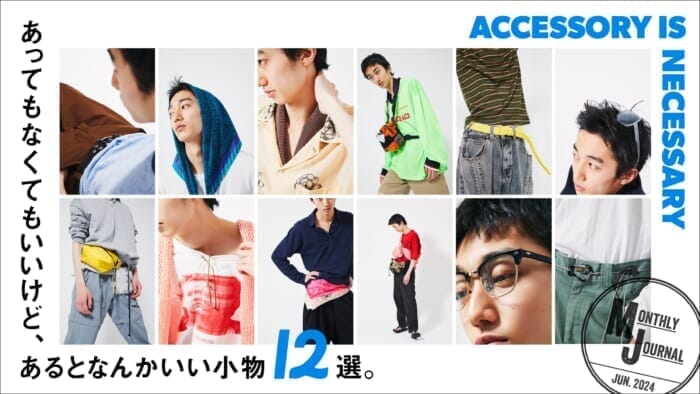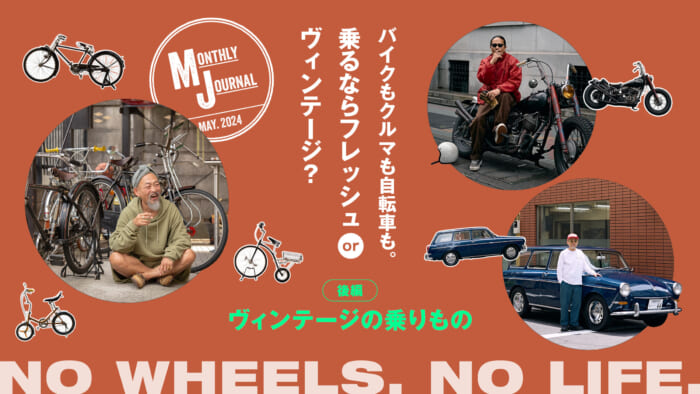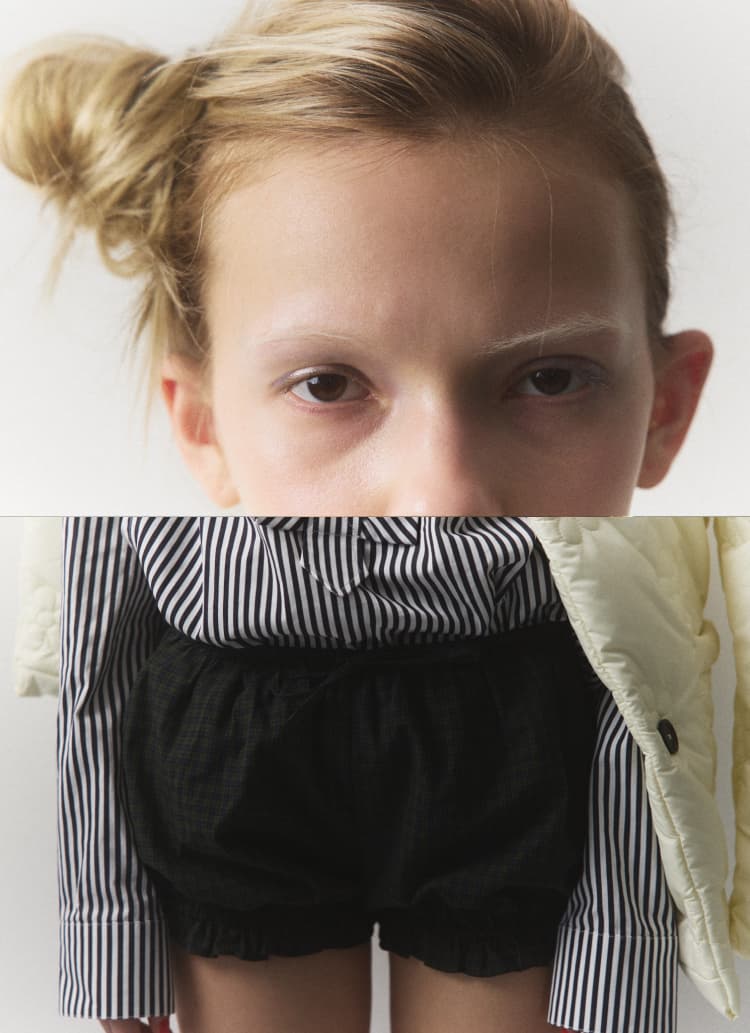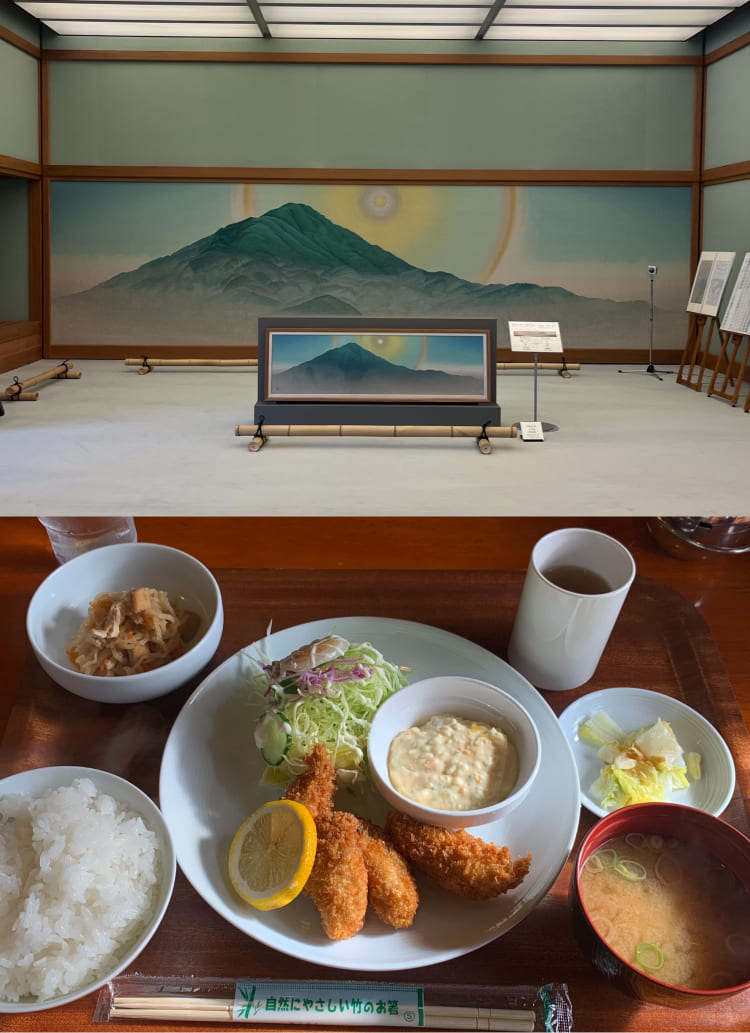03 Vintage Clothing Buyers and America.

PROFILE
He is the representative and buyer of ARMS Clothing Store, a vintage clothing store in Yutenji, which is frequented by people in the fashion industry, and where many authentic items in good condition are sold. Since then, he has been traveling around the U.S. as a buyer since he was 21 years old. He still hunts vintage clothing in the U.S. and has a deep knowledge of American culture, especially skating, motorcycles, movies, and music. He is also a member of HOUYHNHNM's used goods curation site, "Houyhnhnm's." also has a store in the city.
armsclothingstore.com/
instagram@armsclothingstore
Bags to avoid lost baggage.

The carrying bags are Arc'teryx and The North Face, right? Why did you choose outdoor brands instead of suitcase brands?
Saisu: Hard cases are fine, but everyone has them , so it's hard to tell them apart on the conveyor belt at the airport arrival gate. On the other hand, these are easy to tell apart, so you can't miss them. I used to use only military duffel bags, but even American soldiers used to laugh at me (laughs). Arcteryx's duffels are still new, lightweight, and durable enough. I bought the North Face bag about two years ago, thinking that it was newer and better. It is just the right size for carry-on luggage.
I think that the outdoor carry-on bags are not uncommon in the apparel industry, but I guess they are not common.
Saisu: Yes . I don't wear a lot of hard cases. I don't like to lose time because of lost baggage in transit overseas , so I try to be able to tell them apart.
Do you have any tips for avoiding lost baggage?
Saisu: I try to fly direct and not make connections, although there is only so much I can do. . Still, there are some problems.
Is that a "common buyer's experience"?
Saisu: Yes, it is. I don't know if everyone is careful about it, but I have heard that it is possible to get lost baggage, which is partly due to luck, but also because it can go somewhere else. It is a matter of course to purchase the best goods, but the most important thing is to come back safely.

Are there other difficulties?
Saisu: When I arrived at the airport, there was immigration, and when I was younger, I was wearing "Dickies" or something like that and didn't care, but if you go back and forth frequently, sometimes you can get stopped. . However, I have never been stopped, no matter how much luggage I carry. So, one set of jacket, shirt, and decent looking pants is a must. As long as I can get through there, the rest of the time I'm fine, so I'll wear a T-shirt, sweatshirt, and gear-type outerwear.
Which one is the waist bag?
Saisu: ." I use a "F-LAGSTUF-F." I keep my glasses, chopsticks, pens, coins, passport, etc. in it. I carry my glasses, chopsticks, pens, coins, passport, and other things that I need to get out and use quickly. There is a belt on the back, so I can hang it on the handle of my carry-on bag. This brand is owned by a former used clothing store owner, so I bought it because I sympathized with the convenience aspect of the brand. It holds all my important things, and although there are many similar bags, this one is the best in my opinion. It's a must-have while I'm out shopping.
The waist bag by Flagstaff can be attached to a carry-on bag with a back belt.
Saisu: However, these days I don't even carry this with me, and sometimes I carry my passport and wallet together around my neck. The only things I don't want to lose are my credit cards and passport. I rarely take cash with me. I have an account linked to Japan and the U.S. over there, and I can take cash advances from my credit card. Cash is cheaper, but I use a card with a good rate of return and accumulate points to convert them into a passport.
. How many days' worth of clothes and underwear will you bring?
Saisu: I buy my underwear locally. I visit about 10 thrift stores a day, so I wear unused items from stores that have gone out of business for a day and throw them away every day. Of course, sometimes I continue to wear them, but I throw away T-shirts, socks, and pants. At night, there is a large gas station like a service area in Japan where long-distance truck drivers rest, and I take a shower in the coin-operated showers there and go to bed. These days I get tired, so I stay in a motel or something.
The world of vintage clothing that I can talk about because I am a buyer.

How long have you been buying?
Saisu: It has been 9 years since I started "Arms Clothing Store," and before that I was a buyer at a well-established vintage clothing store in Harajuku from the age of 21, so a total of 16 years. Since that time, my main focus has been on the U.S. Since becoming an individual, I have also traveled to Europe in search of brand archives. Some of my routes are fixed, but at any given time, I think about what kind of items I want because it is this time of year.
. How do you target the items?
Saisu: For example, there are differences in the manufacturers of shirts that tend to appear in the East and the West. I refer to the difference in temperature, race, local culture, what was popular in the past, what kind of work was popular, what kind of leisure activities were popular, and so on. We do some verification, but there are hits and misses. But it's not like we don't get anything. I even have customers ask me, "Do you have things?" but it's my job to get them (laughs).
How long do you stay in Japan at a time?
Saisu: It's about 10 days to 2 weeks. I repeat this process in small spans of time, and last year I went 10 times. Sometimes I travel by plane from north to south, but basically I travel by car.
Do you have a general purchasing budget in mind?
Saisu: I decide to a certain extent, but I have to buy it when it comes out, so I ignore that and buy as much as I can. Since it is used clothing, unlike brands, even if it doesn't sell right away, it is normal that it will sell next year or the year after. Since I have been doing this for a long time, I may decide that these items will no longer be on the market, buy them, and put them out when the time is right. Even if there aren't many of them, if they are interesting, we will buy them.

I guess you have a certain number of places to buy from.
Saisu: I stock up at thrifts, dealers, flea markets, and a warehouse-like place called a rag house where clothes are piled up. At my previous job, I was only at the Rag House, but now I mainly work at thrifts and dealers. Plus the rag houses. It's not easy to get in unless I have a relationship with them, so it's not easy to get in.
Do you keep up to date with developments in the U.S.?
Saisu: . to a certain extent. However, they are also keeping a close eye on the Japanese market and know how much they are selling for in Japan. For example, if someone says he will buy it for 2,000 yen, the next time he buys it, it will be 2,000 yen, and if someone says he will buy the same thing for 3,000 yen, it will be 3,000 yen from that time on. This is happening all over the world now, and the price is always going up.

. in the store are motorcycle helmets along with Brown's Beach jackets and Converse.
. You are talking on a global level, aren't you? Is this an era where information is available and anyone can do it?
Saisu: Although this is about the small world of secondhand clothing, I imagine that it is about the same as what was happening in a village, but now at the city level. The general public can see this through "Mercari" and "Yahoo! On the contrary, I feel that more and more people are enjoying coming to secondhand clothing stores. There is a mood that you have to see the real thing.
It's true that online shopping is sometimes a mistake because it's hard to tell the texture of the product.
Saisu: . We may fail, but that's okay, because in the long run we may be able to sell our products. . I feel that these days, the world is no longer buying in a right-to-the-right way, and there is less of a tendency to say, "I want this that everyone else was wearing.
How do you enjoy the United States of America, where you go over and over again?

By the way, what do you look forward to when you travel?
Saisu: The best thing is the food. I'm a little tired of the scenery (laughs). I drive all the time, so I'm like a long-distance driver who carries things. . I eat the local B-meals. Just like looking for old clothes, I gather information about what is famous in the area by asking locals. I also refer to websites like the American version of food logs and Google Maps. . I also visit galleries and museums. I like to look at souvenir shops and buy some for my own personal use.
Indian tandoori chicken, Mexican fajitas, Caribbean Cuban sandwiches, and more,
It is also a great place to enjoy meals from different countries.
People who like clothes are not only interested in clothes, but also in culture.
Saisu: It depends on whether the clothes came first or the culture came first. In my case, clothes came later from music, movies, skateboarding, and motorcycles. From when I was young until I was in my mid-20s, I spent 3 months in the U.S. and 2 months back in Japan. I lived in a kind of ghetto where all the Mexican ex-gang members were, and I had a lot of interesting experiences that I can't talk about here.
You mentioned museums. In art, collectors and museums hold and protect valuable works of art, right? Do thrift stores play such a role in clothing?
Saisu: Yes, that's right. The only brand that does that is Levi's. And Hawaiian shirts have a strong sense of art. Also, Hawaiian shirts have a strong sense of art, and I wonder if T-shirts have the same sense these days. I think that the number of T-shirts that are fake is increasing. I feel that there are more and more things that I think are fake. Well, you don't know until you buy one yourself.
Are there any other things you buy for yourself?
Saisu: . Even though I am a vintage clothing store, I like to buy the latest gadgets, and I do a lot of research before I buy. I bought the Bose sunglass-shaped headphones in the U.S. because they were sold earlier than in Japan. I like to compare iPhone peripherals because they are different from those in Japan, and I also like to store at outdoor stores. I also check both the Japanese and American versions of Amazon.com. I go to see not only vintage clothing stores, but also brand-name stores and new commercial facilities...well, I'm just a nerd (laughs).

The store in Yutenji, with its narrow space full of products, became popular, and he now manages a total of three stores, including one in Shimokitazawa.
. I guess those who can find that kind of enjoyment will have fun no matter how many times they go to the same place.
Saisu: . In the extreme, if you have a store, you can sell anything. I buy what I want like a child, and then try to sell it. Lately, I've been interested in old fishing tackle, so I've been paying attention to vintage lures and rods. I didn't know how good or bad the gear was, but I've started to learn as I've been doing it with my friends who fish. It's fun to start something I didn't know before and talk to people about it. Sometimes, new people come to my shop because of it.
. It was also stressful not being able to meet with people in Corona. . I guess I enjoy meeting people in the end, even though I use the Internet.
Saisu: Rather than just buying the latest fads, we think that customers and ourselves would enjoy the store more if it were a place where we could say that we are interested in the kind of things we like to play with and propose a style based on that interest. I think it would be better if the shopkeepers are doing more shopping than the customers.

. Yes, that's right. I know it must be hard to go to the US now, but what would you like to do when the Coronas are settled?
Saisu: We are making plans to go little by little and are constantly gathering information from the local authorities and embassies. I heard that in some states, the level of 2-week quarantine is changing from mandatory to a request. I think there are still many risks, but I think it would be fun to find equipment for fishing and other hobbies.


